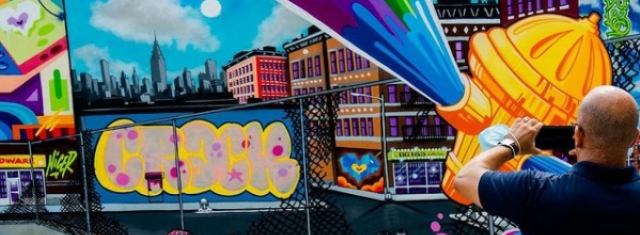Local
Is the Future of Wynwood a Franchise Opportunity?
The Future of Wynwood

USPA NEWS -
There’s little doubt that Miami is changing - and fast.
But one neighborhood, in particular, that is noted for its boho-chic aesthetic and thriving art scene could lose its identity during this process of economic change and growth.
Of course, we’re talking about none other than Miami’s own Wynwood, the city’s version of the Bronx or Brooklyn, and that is experiencing similar levels of gentrification as those two sister boroughs of the Big Apple.
But one neighborhood, in particular, that is noted for its boho-chic aesthetic and thriving art scene could lose its identity during this process of economic change and growth.
Of course, we’re talking about none other than Miami’s own Wynwood, the city’s version of the Bronx or Brooklyn, and that is experiencing similar levels of gentrification as those two sister boroughs of the Big Apple.
Namely, current residents and advocates for Wynwood worry that the arrival of commercial franchises and big-name brands could squeeze out the local haunts and mom-and-pop shops so key to the neighborhood’s identity. Wedged between Brickell, Downtown, Edgewater, and Miami Beach to the east, Wynwood is one of the last places in Miami where “normal” people can live, work, and play.
Yet commercial development and a drive to catch up with the rest of the city could transform the neighborhood into yet another strip of luxury glass terrariums and luxury shopping destinations.
One sign of the changing times manifests itself in the neighborhood’s iconic art murals. Typically devoted to social commentary and depicting events within the community and abroad, the push to add “commercial” art murals to the walls of Wynwood has touched a nerve with some people. After all, how much artistic value does a mural promoting a Netflix show about Selena have? Where is the social commentary?
Yet commercial development and a drive to catch up with the rest of the city could transform the neighborhood into yet another strip of luxury glass terrariums and luxury shopping destinations.
One sign of the changing times manifests itself in the neighborhood’s iconic art murals. Typically devoted to social commentary and depicting events within the community and abroad, the push to add “commercial” art murals to the walls of Wynwood has touched a nerve with some people. After all, how much artistic value does a mural promoting a Netflix show about Selena have? Where is the social commentary?
How is this different than a billboard? To be sure, there are many reasons why property owners and businesses in Wynwood might welcome the changing demographics in the neighborhood. For one, South Florida’s real estate market is booming like never before and the demand for luxury high rises is at a peak.
It’s hard to imagine that Wynwood hasn’t looked around at its neighbors and noticed their spectacular economic growth over the past twenty years as well as how much this has changed the landscape of the neighborhoods themselves. Still, the question remains whether this is the right path for Wynwood and, further, how much culture and history Miami might lose in the process of becoming another Brickell City Center or Paraiso Bay.
Still, the COVID-19 pandemic and subsequent shutdowns have shown many in Miami just how fragile the local economy can be and how hard it is, especially for small businesses, to survive in such an environment. Towards that end, arguments for economic diversification and gentrification within reason do have some traction.
Proponents of this middle way want to find a path towards preserving Wynwood’s unique character while also meeting market demands for new housing, shops, and job opportunities. Plus, there’s a bit of not wanting to be left out of the general vibe that is lifting Miami into the top echelons of America’s most powerful cities and Wynwood’s unique position as a cultural destination and landmark could bode well for its status in a new, much more international Miami.
Proponents of this middle way want to find a path towards preserving Wynwood’s unique character while also meeting market demands for new housing, shops, and job opportunities. Plus, there’s a bit of not wanting to be left out of the general vibe that is lifting Miami into the top echelons of America’s most powerful cities and Wynwood’s unique position as a cultural destination and landmark could bode well for its status in a new, much more international Miami.
Liability for this article lies with the author, who also holds the copyright. Editorial content from USPA may be quoted on other websites as long as the quote comprises no more than 5% of the entire text, is marked as such and the source is named (via hyperlink).







